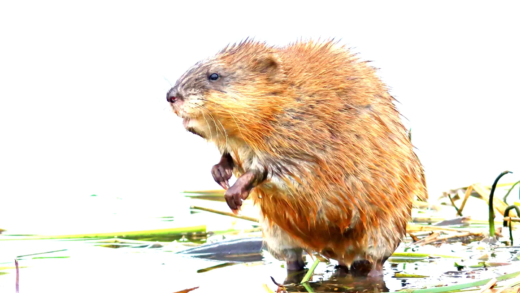House spiders are often misunderstood, with many myths surrounding their presence. Most species are harmless and beneficial, aiding in pest control. Preventive measures, such as sealing gaps and reducing clutter, can minimize spider infestations. Their role in ecosystems is vital, as they help maintain pest populations and serve as food for other wildlife.
Common House Spider Species
House spider species vary widely, but six frequently encountered types are essential to know. Understanding these spiders helps identify which ones are common in homes:
- Common House Spider (Parasteatoda tepidariorum): This spider is often found in corners and ceilings, recognizable by its tan body and dark stripes.
- Black Widow (Latrodectus mactans): Known for its glossy black body and red hourglass, this spider is often feared due to its venom.
- Brown Recluse (Loxosceles reclusa): Identified by its violin-shaped marking on its back, it prefers dark, secluded areas.
- Cellar Spider (Pholcus phalangioides): These spiders are long-legged and are often found in basements, preying on other spiders.
- Wolf Spider (Lycosidae): Unlike most house spiders, these are fast and hunt actively, easily recognized by their robust body and hairy legs.
- Jumping Spider (Salticidae): Small but colorful, these spiders are known for their jumping ability and keen eyesight.
Knowing these common house spiders can help homeowners manage their presence and understand their roles in the ecosystem.
Identifying House Spiders
Identifying house spiders is crucial for distinguishing between harmless and potentially dangerous species. Here are tips to help with identification:
- Look for body shape and color. For instance, black widows are shiny black, while brown recluses are light brown with a distinct violin shape.
- Examine the webs. House spiders often spin messy webs, while black widows create more organized webs.
- Observe behavior. Jumping spiders are active and can leap, while cellar spiders tend to remain still.
Having a clear guide to identifying these species can alleviate fears and promote safe cohabitation.
Are House Spiders Dangerous?
House spiders generally pose minimal risks to humans and pets. Most species, like the common house spider and cellar spider, are harmless and beneficial as they control pest populations.
- Black Widows and Brown Recluses: These are the exceptions. Their bites can be dangerous, causing serious health issues.
- Symptoms of bites: Pain, swelling, and in severe cases, fever or chills. Seek medical attention if bitten.
It’s essential to assess the types of spiders in your home to understand the safety they pose. Most house spiders contribute to a healthier living environment.
Benefits of House Spiders
Having house spiders in your home can be beneficial. They play a vital role in controlling pest populations:
- Spiders feed on insects like flies, mosquitoes, and cockroaches, reducing their numbers.
- They help maintain a balanced ecosystem, preventing pest infestations.
Embracing house spiders can lead to a healthier home environment, showcasing their importance beyond mere pest control.
Where to Find House Spiders
House spiders often seek out specific hiding spots within your home. Knowing where to look can help you manage their presence effectively. Common hiding spots for house spiders include:
- Basements: Dark, damp areas are ideal for many spider species, including cellar spiders.
- Corners of rooms: Spiders frequently spin webs in the corners of walls and ceilings.
- Behind furniture: Cluttered spaces provide excellent hiding spots for spiders, allowing them to remain out of sight.
- Under sinks: Moist environments attract spiders, making under-sink areas a popular choice.
- Attics: Unused and dusty spaces are often home to various spider species.
- Window frames: Spiders may lurk in the nooks of window frames, waiting for prey.
By regularly checking these areas, you can keep track of spider populations and address any concerns promptly.
What to Do if You Find a Spider
If you encounter a spider in your home, knowing how to handle the situation is essential. Here are practical steps to deal with spider encounters:
- Stay calm: Most house spiders are harmless. Panicking can lead to accidents.
- Do not touch: Avoid direct contact, especially with unknown spider species like black widows or brown recluses.
- Use a jar: Gently trap the spider using a glass jar and a piece of paper to slide it out.
- Relocate outside: Release the spider in a garden or natural area away from your home.
- Clean regularly: Maintain cleanliness in your home to reduce spider attraction. Vacuuming corners and decluttering can help.
These steps can help you coexist peacefully with house spiders while keeping your living space comfortable.
Myths About House Spiders
Common misconceptions about house spiders can lead to unnecessary fear and misunderstanding. Let’s debunk some prevalent myths:
- All house spiders are dangerous: Many people believe that every spider in their home poses a threat. In reality, most house spiders are harmless and beneficial.
- Spiders bite humans frequently: It’s a common belief that spiders are aggressive towards humans. However, spiders usually bite only in self-defense.
- House spiders cause structural damage: Unlike termites, house spiders do not damage homes. They actually help by controlling pest populations.
Understanding these myths can help alleviate fears and promote a more balanced view of these creatures.
Preventing Spider Infestations
To keep your home spider-free, it’s essential to implement preventive measures. Here are some practical tips:
- Seal cracks and openings: Inspect your home for gaps around windows, doors, and foundations, and seal them to prevent spiders from entering.
- Reduce clutter: Spiders thrive in cluttered areas. Regularly decluttering your home minimizes their hiding spots.
- Maintain cleanliness: Regular cleaning, including vacuuming corners and dusting surfaces, discourages spiders from making your home their habitat.
- Use natural repellents: Essential oils like peppermint can deter spiders. Spraying these around entry points may help keep them at bay.
Implementing these strategies can significantly reduce spider presence, creating a more comfortable living environment.
The Role of House Spiders in Ecosystems
House spiders play a crucial role in maintaining ecological balance. Their presence contributes to pest control, which is vital for a healthy environment:
- Pest management: House spiders consume a variety of pests, including flies, mosquitoes, and other insects, keeping their populations in check.
- Food source: Spiders serve as a food source for birds and other predators, integrating them into the food web.
- Biodiversity: The diversity of spider species in homes reflects a healthy ecosystem, showcasing their importance in biological balance.
Recognizing the ecological importance of house spiders can lead to a greater appreciation for their presence in our homes.





Comments are closed.